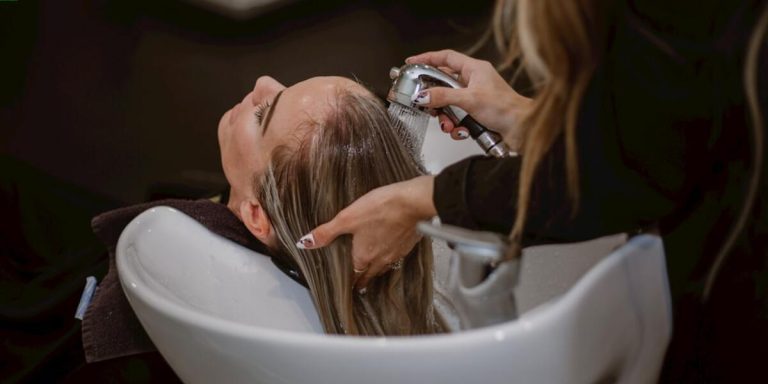Does Health Insurance Cover Hair Loss Treatment? A Comprehensive Overview
Navigating the intricacies of health insurance can be a complex task, and understanding what specific treatments are covered often feels like deciphering an unsolvable code. One question that frequently arises is: ‘does health insurance cover hair loss treatment?’ For many individuals experiencing hair thinning or baldness, this issue goes beyond simple vanity; it’s a matter of emotional well-being and self-confidence.
This blog will shed light on your options when dealing with hair loss and analyze if health insurers routinely cover these treatments. We aim to familiarize you with healthcare lingo, insights into common policy clauses concerning alopecia medical procedures, and highlight potential loopholes in your coverage plan. You’ll gain all the necessary information to make educated decisions about managing the costs of various therapies for treating hair fall.
Did you know?
Despite common misconceptions, some health insurance plans do cover hair loss treatments under certain conditions such as if the hair loss is due to a medical condition or injury.
Understanding Insurance Coverage for Hair Loss Remedies
Understanding insurance coverage for hair loss treatments can save you a considerable sum of money in the long run. In 2023, as health care costs continue to rise, many individuals question if their policy covers such procedures or medications.
Different types of insurances offer diverse degrees of coverage and it largely depends on your specific plan details. With certain insurers, medically necessary surgeries would be covered but this does not typically include cosmetic procedures like hair transplants. However, prescription drugs used to treat hair loss conditions may fall under the umbrella of most standard pharmaceutical benefits plans.
Importantly remember – while treatment with over-the-counter products like minoxidil (Rogaine), may show positive results; unfortunately these are usually excluded from being insured because they’re considered optional lifestyle medications by many health insurance companies rather than essential prescriptions.
Always consult with your insurer for the specific details of what is included in your plan, especially for treatments related to baldness or thinning hair. As policies evolve to cover more aspects of wellness, it’s essential to have up-to-date information before proceeding with any treatment.
Hair loss solutions can be costly unless you proactively consider them through discussions about available healthcare coverages.
Evaluating Health Insurance Policies for Alopecia Treatment
Evaluating your health insurance policy for Alopecia treatment is critical to understanding whether the costs associated with hair loss remedies are covered by your provider. To determine if health insurance covers hair loss treatment, several aspects need careful consideration.
Firstly, examine what types of treatments your current insurance plan includes. Standard policies may cover conditions like Androgenic Alopecia and medical procedures such as transplants or scalp reduction surgeries due to their medically necessary nature. The coverage widely varies depending on the nature of alopecia – temporary or permanent – and its underlying cause.
Secondly, keep an eye on exclusions in the policy wording carefully. Some insurers exclude certain conditions from being covered entirely, while others offer limited coverage under specific circumstances only.
Another point to remember is that not all therapies intended for treating baldness might be viewed as medically essential by insurance companies; consequently they aren’t generally included in standard plans’ scope- this encompasses treatments like Low-Level Laser Therapy (LLLT).
Deciphering the Fine Print: Eligibility Criteria and Exclusions
In your journey to combat hair loss, understanding whether your health insurance covers treatment can be a critical step. Does health insurance cover hair loss treatments? To answer this overarching question, we first need to navigate through the fine print of eligibility criteria and exclusions.
The specific phrases used by insurers often indicate what they’re willing to cover. Most commonly covered are medical conditions that result in hair loss such as alopecia areata or chemotherapy-induced alopecia. If the root cause is considered ‘medical’, chances increase for coverage.
It’s important to note here – diagnosis must come from an accredited dermatologist or trichologist; self-diagnosing doesn’t hold merit with most companies. Further, some policies mandate trial periods where less expensive therapies like minoxidil have been proven ineffective before considering more costly alternatives.
Insurance policies also present certain exclusions when it comes to treating baldness or thinning hair. Cosmetic procedures meant purely for enhancing appearance usually don’t make the cut since these aren’t regarded as medically necessary situations – think about surgeries including follicular unit extraction (FUE) or transplantation (FUT).
However, there’s room for negotiation if you can prove that losing strands has resulted in mental distress severe enough impacting day-to-day life quality- known technically as body dysmorphic disorder (BDD).
In many cases though protocol dictates trying out non-surgical solutions prior moving onto surgical considerations under expert supervision only when previous methods didn’t yield satisfactory results.
Comparing Cost-Effective Solutions to Tackle Hair Loss
When it comes to tackling hair loss, cost-effective solutions are paramount. However, a crucial question many individuals ask is – “does health insurance cover hair loss treatment?” The answer can vary depending largely on your specific healthcare policy and the nature of your treatment plan.
Most health insurance policies today consider standard hair restoration treatments, such as medical-grade shampoos or over-the-counter topical ointments like Minoxidil, cosmetic expenses. Consequently, most medical insurances might not cover them.
However, if a doctor confirms that hair loss is due to a larger medical issue such as hormonal imbalance or an autoimmune disorder rather than genetic predisposition or aging, those treatments may qualify for coverage under certain insurance plans.
As we delve further into comparing these aspects in 2023, you would need to consider several variables including individual policy considerations and expert opinions before making any decisions based upon financial concerns alone. Keep in mind that each case will differ significantly when it comes straight down to what procedures an insurer might deem necessary vs ones deemed merely optional thus affecting coverage services offered through one’s respective health care provider portfolio.
Alternative Treatments: Weighing Out-of-Pocket Costs vs. Effectiveness
It’s important to note that not all treatments are fortunate enough to fall under healthcare coverage plans. Health insurance providers often label hair loss solutions as ‘cosmetic procedures.’ But don’t fret! There exist cost-effective alternatives you can consider.
When tackling out-of-pocket expenses related to non-insured hair-loss treatments; it boils down to understanding two key aspects: Cost versus Effectiveness.
Out there exists numerous affordable remedies available over-the-counter (OTC). Among them include topical products like minoxidil or finasteride-based pills—both widely recognized by experts in combating early-stage balding issues effectively. What makes this appealing is their price point – requiring minimal spend compared with other solutions such as surgical interventions or laser therapy sessions- providing decently effective results considering its affordability factor.
Onwards we move towards slightly more upscale options like Platelet-Rich Plasma (PRP) therapy and Low-Level Laser Light Therapy (LLLT), proven extremely effective but may require moderate investment from your side due to most insurances overlooking these therapies mainly categorized under cosmetic procedure sections instead of medical necessities needed for healthy living standards despite a high effectiveness quotient present.
Prescription Medication Versus Transplant Surgery: A Financial Breakdown
When it comes to tackling hair loss, there are two primary solutions that people often consider: prescription medication and transplant surgery. To understand which one is a more cost-effective option, let’s delve into the financial breakdown of each.
Prescription medications such as Minoxidil and Finasteride have become popular choices in managing hair loss. These FDA-approved drugs can help slow down balding or even stimulate new growth over time.
Minoxidil typically costs between $20 – $100 per month depending on the brand chosen while finasteride may range from $30 – $80 monthly. This makes an annual expense of approximately $600 – 2160 for minoxidil users and around$360-$960 for those using finasteride.
On the other hand, Hair Transplant Surgery popularity has been growing rapidly due to its effective results with many celebrities openly endorsing them. The price varies greatly based on factors like surgeon expertise level, geographic location and extent of treatment needed but generally falls between the bracket of $4000–15000 per session . Considering multiple sessions might be required; this could lead to substantial expenses spanning tens-of-thousands dollars annually .
Navigating the Claims Process for Hair Restoration Benefits
Understanding the claims process for hair restoration benefits is essential when trying to figure out if your health insurance covers hair loss treatment. It’s a common misconception that all medical insurances automatically cover treatments related to aesthetics, including those used in addressing balding or thinning of hair. However, this isn’t always necessarily the case.
The coverage largely depends on your specific plan and what it deems as “medically necessary” procedures.
To navigate through this complex maze of insurance policies, one must determine first whether their particular circumstance can be classified under curative care rather than simply cosmetic enhancement. If you’re experiencing excessive hair loss due to an illness or a prescription medication side-effect, then there might be room for negotiation with your provider – given that restoring such conditions may contribute towards overall improvement in physical well-being and mental confidence.
Remember: knowledge is power! Request detailed information about both included exclusions and covered provisions regarding dermatological services from your insurance representative directly; they are obligated by law to provide clarifications pertaining anywhere within these parameters upon request.
Step-by-Step Guide to Filing a Claim for Hair Loss Treatment Coverage
Navigating the path to file a claim for hair loss treatment coverage can be tough. But, with our step-by-step guide, we hope to make it easier. It’s important to understand that not all health insurance policies cover this cost; however, some do depending on your specific situation and policy terms.
The first thing you need to know is what exactly your current health insurance covers. You’ll want to verify if treatments related specifically to hair loss are covered under your plan. Some insurance companies consider these procedures as cosmetic rather than medical necessity but in recent years many have changed their stance.
Start by documenting any doctor visits or consultations regarding your condition of hair loss (medical name Alopecia). These documents establish evidence and may strengthen your case when filing a claim.
Next on the list is consulting with professionals—your doctors or even an attorney—who specialize in dealing with health-related claims can provide invaluable advice based off concrete knowledge about how certain insurers work around such cases.
Once you’ve gathered enough documentation supporting why you indeed require this procedure medically speaking—not just aesthetically—you’re ready now file that formal request for coverage from insurer—it’s time fill out necessary paperwork provided company send away approval consideration soon possible!
When lodging applications remember include everything! The more detailed comprehensive application—the better chance receiving positive outcome quickly efficiently leaving no room doubt denial due lack information.
Handling Denials: Appeal Strategies for Rejected Claims
Unexpected denials for your hair restoration claims can be disheartening, especially when you’re grappling with the distress of hair loss. However, it’s important to remember that denial is not an endpoint but rather a hurdle on the journey towards gaining benefits for your treatment.
Firstly, understanding why your claim was denied paves way to developing an effective appeal strategy. Common reasons often revolve around health insurance providers deeming certain procedures as cosmetic or non-essential treatments– leading them away from coverage policies.
Secondly, taking immediate action upon receiving a denial letter is crucial in optimizing chances of successful appeals. Make sure to take note of any deadlines and initiate contact with your insurer clarifying their stance regarding “hair loss remedies” being categorized under essential medical care.
A critical part of handling rejections involves procuring comprehensive reports from healthcare providers supporting that ‘hair loss’ indeed impacts overall wellness and mental well-being significantly. Evidence-based studies suggesting improvement post-treatment can strengthen these assertions even more which could help make insurers reconsider their initial decision against covering costs associated with ‘Hair Loss Treatments’.
Conclusion
So, the burning question is – does health insurance cover hair loss treatment? In summary, it’s a mixed bag. Some policies do provide coverage for treatments deemed medically necessary while others may not extend their reach to this area.
It prominently depends on your specific plan details and the reason behind your hair loss.
We understand how crucial optimal hair health is to you; hence we’re dedicated to providing more insights into other fantastic and affordable Hair Loss Treatments available out there. Feel free to dive deep into our articles or better yet bookmark our website as your go-to resource for anything related to maintaining luscious locks!







